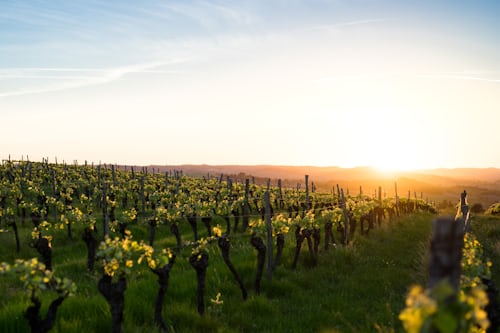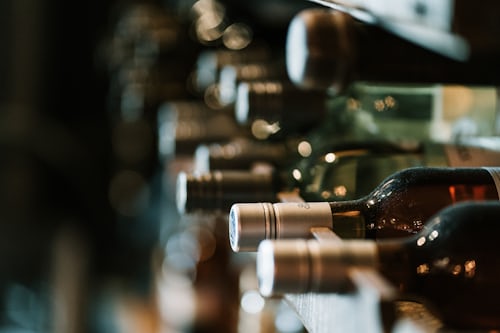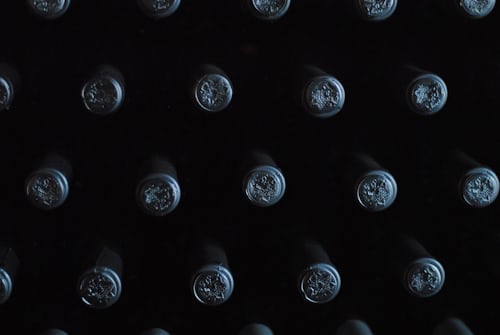The vineyard has inspired hundreds of thousands to leave the country’s city life. For many, it is a life-long dream to have a winery. On the surface, winemaking is quite simple: you collect raisins, throw them into a tank, and then wait. After some time, you’ve got wine. Here’s a guide of the wine fermentation process step by step to help you.
What Is Wine Fermentation?

Before knowing the wine fermentation process step by step, you should know what wine fermentation is. Fermentation is the process by which the grapes must transform into wine (a fantastic term for unfermented grapes or juice). Yeast converts grape sugars into alcohol during fermentation. There’s a lot more going on than just alcohol production. Fermentation causes complex chemical reactions that affect the finished wine’s flavor, aroma, and even color.
How does this process work? It’s pretty simple. Natural sugars are loaded with grape juice. Suppose the grape juice is added to a strain of yeast. In that case, the yeast consumes the juice’s sugars, converting them into alcohol (more precisely ethanol/ethyl alcohol) and carbon dioxide by chemicals.
In winemaking, fermentation is an essential process – wine can not actually be produced without it. This is when the expertise of a winemaker (both technically and esthetically) shines. Although the fermentation process is natural, it can be manipulated, delayed, paused, accelerated, and all of these can certainly be reflected in the end result.
The winemaker can control the fermentation’s temperature, and speed for the best effect, and other factors like the oxygen level in the must/juice are also carefully monitored and taken into account. The yeast strain of a winery is also highly personal and is an element that most winemakers keep secret.
The fermentation process can happen as is common today in a stainless steel tank, in a wine barrel, or even a single bottle. What guides a wine producer during fermentation often is linked to the winemaking tradition he or she embraces and follows.
The Process Of Winemaking

For thousands of years, winemaking has been around. Wine production, in its basic form, is a natural process requiring very little human intervention. It is up to humans to embellish, improve, or entirely erase what nature has provided, as can be attested by anyone with extensive wine degustation experience.
The production of wine consists of five necessary steps. It involves harvesting, crushing, pressing, fermentation, clarification, then aging. There are, without doubt, endless differences and variations along the way. It is the variants and small variations that make life interesting at any point in the process. They also make every wine unique and ultimately contribute to every particular wine’s grandeur or ignominy.
The steps to produce white wine and red wine are essentially the same, with one exception. Another issue is the production of rosé wines and fortified or sparkling wines. Both require additional human intervention. Here is a wine fermentation process step by step to help you understand winemaking.
Harvesting
Harvesting or picking is undoubtedly the first step in the actual process of making wine. There would be no wine without fruit, and no fruit other than grape could produce a reliable amount of sugar each year to produce enough alcohol to preserve the resulting drink. No other fruit could be made with the required acids, esters, and tannins to consistently make natural, stable wines.
For this reason and a host more, most winegrowers recognize that, at least in a figurative way, wine is made in the vineyard. The process of making fine wine calls for the grapes to be harvested at a certain time, preferably when physiologically mature.
A combination of science and traditional delicacies usually determine when they are to be harvested, with consultants, winemakers, winegrowers, and owners all having their say. Mechanically or by hand, harvesting can be done.
Many estates prefer the hand harvesting; however, since mechanical harvesting of grapes and vineyards can often be too difficult. After the grapes arrive at the winery, well-known winemakers sort the grape grapes out, sweetening red or under-mature fruits before they crush.
Crushing and Pressing

The traditional breakdown of the entire clusters of fresh, ripe grapes is the next step in the production process. Today, mechanical crushers carry out the longstanding tradition of stumping or stumbling the grapes into what is known as a must.
For thousands of years, the harvesting dances in barrels and presses began with the magical transformation of grape juices from concentrated sunlight and water held together in fruit clusters to the healthiest and most mystical of all beverages, wine.
Change involves something lost and something gained, like anything in life. Much of the romance and ritual has gone from this stage of wine production through mechanical presses, but it doesn’t take long to lament the immense sanitary gain that mechanical pressing brings to winemaking.
Mechanical pressing has also improved the quality and longevity of wine and reduced the need for preservatives for the winemaker. All this said it must be noted that not every wine begins life in a crusher. Winegrowers sometimes decide that the fermentation process starts within uncrossed whole grape clusters, allowing the grapes’ natural weight to break down the skin and the beginning of fermentation before the uncrushed clusters are pressed.
More Information
The steps to produce white wine and red wine until they crush and press are essentially the same. However, in order to produce white wine, a winemaker will quickly press the must after the crushing, so that the juice can be separated from the skins, seeds, and solids.
Thus, unwanted color (that comes from the grape’s skin, not from the juice), and tannins are unable to leak into the white wine. White wine essentially allows very little skin contact, while red wine keeps color, flavor, and tannin in touch with its skins during fermentation, which is, of course, the next step.
Fermentation

The wine fermentation process step by step is the magic in making wine. If left to its own devices, the natural fermentation starts with the assistance of wild yeasts in the air within 6-12 hours. This natural fermentation is a welcome phenomenon in very clean, well-established wineries and vineyards.
For several reasons, however, many winemakers prefer to intervene by inoculating the natural must. This means they kill wild and sometimes unexpected natural yeasts and then introduce a yeast strain of personal choice to predict the end result more efficiently.
Regardless of the path chosen, it usually continues once fermentation starts until all sugar is converted into alcohol, and dry wines are produced. Fermentation can take from 10 days to a month or more. The resulting alcohol content in a bottle of wine will vary from one location to another because of the must’s total sugar content.
An alcohol level of 10% in cool climates versus 15% in warmer areas is considered normal. When the fermentation process stops before all sugar has become alcohol, it produces sweet wine. This is usually an aware and deliberate decision by the winemaker.
With the progress of fermentation, certain species of yeast quickly convert the natural sugars found in the must into carbon dioxide and ethanol or ethyl alcohol. Manufactured as a defense mechanism, few yeast species can tolerate even moderate ethanol levels.
At the beginning of fermentation, many yeast species die off at around 4–5% ABV or alcohol by volume. With the growth of ethanol, one strain — Saccharomyces — emerges as the victor of this fierce competition and starts to ferment the wine to dryness.
Add egg whites, clay, or other wine compounds that are used to precipitate dead yeast cells and other solids from wine. The unwanted solids are adhered to and forced to the bottom of the tank. The clarified wine is then racked up in another vessel, ready to be bottled or aged.
Considerations
In the fermentation process, temperature plays an essential role. If the temperature of fermentation is too cool, the yeast may not be vigorous enough for fermentation. It will simply remain dormant in the juice. If the fermentation temperature is too warm, the yeast can ferment well, but it usually suffers from the wine’s flavor.
This is due to the increased yeast production of undesirable enzymes and the potential growth of microorganisms that thrive at warmer temperatures. The optimum fermentation temperature is 72 degrees, but between 70 and 75 degrees.
Aging and Bottling
The final stage of winemaking involves wine aging and bottling. After clarification, the winemaker can choose to bottle a wine straight away or give additional aging to a wine. Further aging in bottles, tanks of stainless steel or ceramic, large ovals of wood, or small barrels is possible.
In this final stage of the process, the choices and techniques employed are almost endless, as are the end results. In all cases, however, the typical result is wine.
Final Words
It takes two to eight weeks to produce wine—first 10 to 15 days for fermentation, then 1 to 6 weeks for filtration and clearing. You can then drink the wine, but often you would like to store the wine for aging for at least one month and up to several years before the taste is the way you want it. But in just 2-8 weeks it will be drinkable.
Remember always, the longer it takes to taste, the white sugar you add to your juice. There is no need for a specialized room to store the wine. A cool, dark place helps the wine age without influencing external factors such as heat and light. Hopefully, this wine fermentation process step by step guide helped you understand winemaking!






